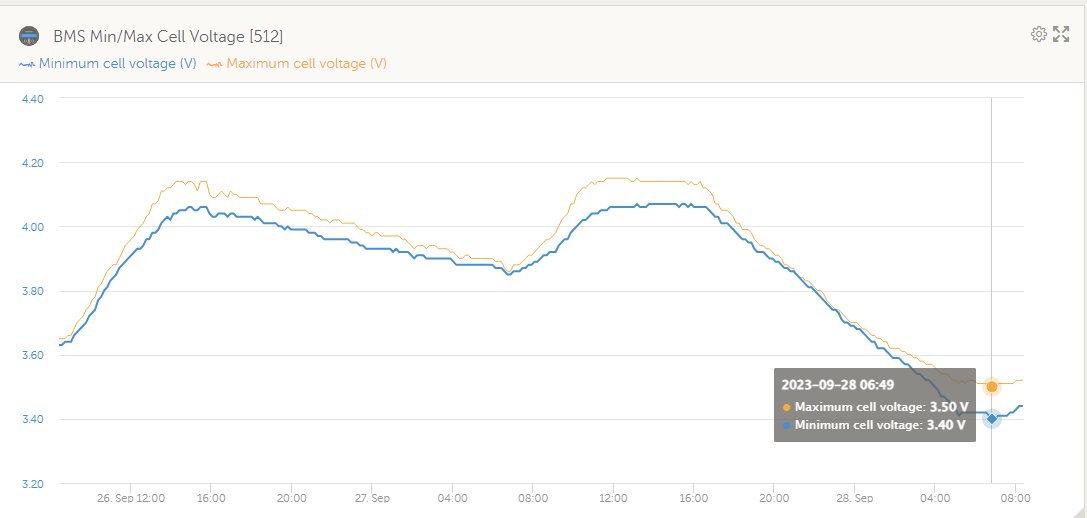How to deal with this problem of almost 100mV difference between Tesla cells (2x 6S) at almost full and almost empty levels ? I'm using SimpBMS to control the cells, with Venus GX, MultiPlus-II 48/3000/35-32, SmartSolar Charger MPPT 150/70.

- Home
- Anonymous
- Sign in
- Create
- Spaces
- Grafana
- Node-Red
- Unsupported topics
- Questions & Answers
- Modifications
- Communauté francophone
- Deutschsprachiger Bereich
- Preguntas en Español
- Explore
- Topics
- Questions
- Ideas
- Articles
- Badges
question
Simp BMS Min/Max Voltage of 100mV
Similarly in LiFePO4 world I would recommend wiring the packs in parallel first and full charging using a battery charger to do an initial top balance if you dont an active balancer/your BMS is not able to keep up. Then if the BMS has a small/passive balancer it might be able to keep battery in check after you initially manually balance the cells.
That being said I dont know if that applies to Tesla cells.
100mv is quite large for LiFePO4 deviation (again not sure if thats comparable in tesla cells). If it was small deviation i would maybe suggest just one really long absorption period to allow the BMS to use it's built in balancer to balance the pack. But 100mv sounds a lot/might be too long to leave the cells in absorption phase/not worth the stress on cells.
100mV difference between cells at the 95%+ charge state would not be too abnormal, but you do want to ensure that your balancing circuits can cope with the charge current at this point.
With GX (Venus os) controlled systems, this is normally taken care of by enabling DVCC, and ensuring that all the chargers are linked to the GX.
If you system does not have charge current controlled by the BMS, then this needs to be implemented. My home system starts limiting the charge current on max cell voltage, then uses the balancing current to bring the low voltage cells up to this limit, it usually takes about 2 - 3 hours for them to equalise.
Related Resources
Victron VE.Bus BMS product page
Victron 3rd party BMS compatibility page
Additional resources still need to be added for this topic
question details
45 People are following this question.
